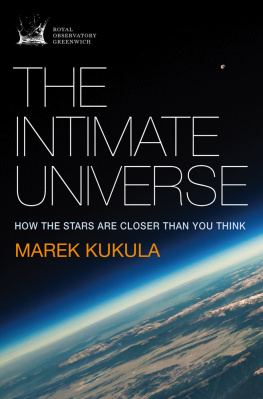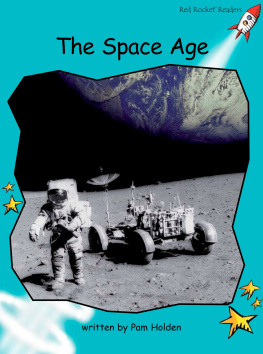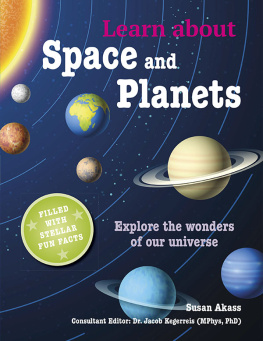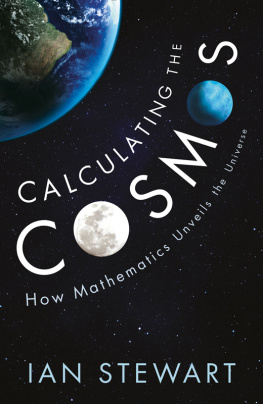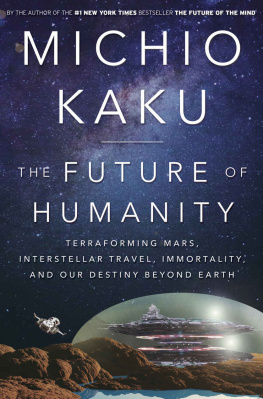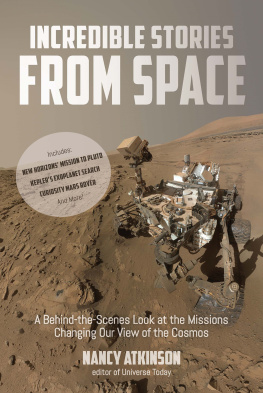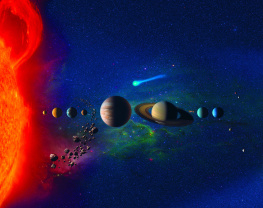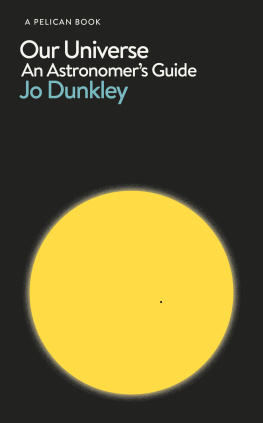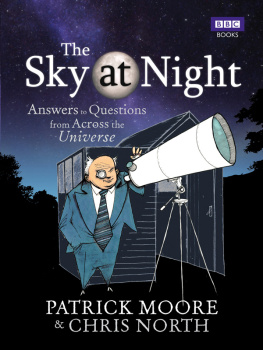
First published in Great Britain in 2015 by
Quercus Publishing Ltd
Carmelite House
50 Victoria Embankment
London EC4Y 0DZ
An Hachette UK company
Published in association with Royal Museums Greenwich,
the group name for the National Maritime Museum,
Royal Observatory Greenwich, Queens House and Cutty Sark.
www.rmg.co.uk
Text 2015 National Maritime Museum, Greenwich, London
Author: Marek Kukula
The right of the Author to be identified as the Author of the Work
has been asserted by them in accordance with the
Copyright, Designs and Patents Act 1988
All rights reserved. No part of this publication
may be reproduced or transmitted in any form
or by any means, electronic or mechanical,
including photocopy, recording, or any
information storage and retrieval system,
without permission in writing from the publisher.
A CIP catalogue record for this book is available
from the British Library
HB ISBN 978 1 78206 789 4
TPB ISBN 978 1 78429 487 8
EBOOK ISBN 978 1 78206 790 0
Every effort has been made to contact copyright holders.
However, the publishers will be glad to rectify in future editions
any inadvertent omissions brought to their attention.
Quercus Editions Ltd hereby exclude all liability to the extent permitted
by law for any errors or omissions in this book and for any loss, damage
or expense (whether direct or indirect) suffered by a third party relying
on any information contained in this book.
10 9 8 7 6 5 4 3 2 1
Typeset by Hewer Text UK Ltd, Edinburgh
Printed and bound in Great Britain by Clays Ltd, St Ives plc
For my father
Contents
Introduction
We live in an interconnected world. Our daily lives depend on networks of trade, transport and communication that extend across the planet. Food and raw materials are transported halfway around the globe, while local and national economies are inextricably bound into a global system, so much so that its upswings and crashes affect us all. Vast quantities of information surge along the virtual highways of the internet, satellites beam global news into our homes, and individuals, nations and cultures interact with an ease that no one could have imagined just a few decades ago, leading to both conflict and cooperation in new and unpredictable ways.
While the human population of planet Earth is linked together as never before, this global web of connections is by no means limited to the affairs of the human race. As we have learned more and more about the workings of our planets geology, atmosphere, oceans and biosphere, we have come to understand that these too are joined together in a single global system that has been shaping our world ever since it formed 4.5 billion years ago.
As we humans have discovered to our cost, the Earths natural systems do not respect national boundaries. In the 1970s, sulphur dioxide emissions from coal-fired power stations in Britain led to acid rain in Scandinavia, poisoning the native conifer forests and damaging the local timber industry. In 1986, radioactive particles from the burning Chernobyl nuclear reactor in the Soviet Union rained down on the mountains of North Wales, leading to a ban on human consumption of livestock reared on the contaminated pastures. Today, global warming primarily caused by the carbon dioxide emissions of industrialized nations is recognized as a problem that affects the entire world. On an interconnected planet no nation is immune from the actions of its neighbours.
Natural events in one place can also have profound consequences on the other side of the planet. Sandstorms in the Sahara blow desert dust high into the atmosphere, where it is carried across the Atlantic to fertilize the rainforests of the Amazon Basin. El Nio events warm the surface waters of the Pacific Ocean, triggering changes in rainfall and temperature around the globe, with floods in California, droughts in Australia and colder winters in Northern Europe. Even the day-to-day vagaries of the worlds weather are linked together by a bewilderingly complex web of connections: as the old clich reminds us, the beat of a butterflys wings in Brazil might lead, via a global chain of atmospheric dominoes, to a thunderstorm in Birmingham.
But Earth itself is not a closed system, cut off from the rest of the universe. Our environment does not stop at the top of the atmosphere and there is no invisible barrier there to seal our planet into an impenetrable bubble. On the contrary, planet Earth is constantly interacting with its surroundings, and extraterrestrial influences continue to shape our world in every conceivable way. From the sunlight that warms us, driving our weather and powering our food chains, to the gravitational forces that control the tides and keep the Earth on its seasonal track, objects in space exert a profound and immediate influence on our daily lives. The connections go much deeper than that: every mol-ecule, atom and subatomic particle here on Earth can trace its origins out into the wider cosmos, each with an astonishing story to tell, involving comets and nebulae, titanic collisions and exploding stars, and stretching out into the depths of the galaxy and back to the origins of the universe itself. To understand how our planet came to be the way it is, and how its life-sustaining geology, climate and biosphere operate today, we need to consider the Earth as a component in a much larger cosmic system.
Even some of the strangest and most extreme types of astronomical phenomena have closer connections to our daily lives than we might suppose. Exotic objects like neutron stars and supernova remnants have played a crucial role in the creation of the habitable conditions that we enjoy here on Earth, while the alien geologies and atmospheres of our neighbouring planets and moons provide us with profound insights into the workings of our own world.
Astronomy has also taught us to see our immediate surroundings in a strange new light. One of the greatest achievements of modern cosmology has been the discovery that the ordinary matter that forms our bodies, the Earth, stars, nebulae and galaxies everything in fact that our telescopes can see is only 5 per cent of the total content of the universe. The rest seems to be made up of two intriguing but mysterious quantities: dark matter, which holds the galaxies together and accounts for 27 per cent of the cosmic total, and the even more enigmatic dark energy, which provides the remaining 68 per cent and which seems to be causing the universe to expand faster and faster. We currently have no firm idea of what dark matter and dark energy consist of in other words an astonishing 95 per cent of the stuff of the universe remains a mystery. And yet dark matter and dark energy are all around us not just out there in the distant reaches of interstellar space but here in the room with us now. Between them, they have played a profound role in shaping the universe of galaxies, stars and planets, helping to create the conditions in which life can exist, but although they have been our constant companions for the whole of human history, it is only in the last few decades that we have realized they exist.
This book is all about the surprisingly intimate connections that we have with the universe beyond our home world. Over the coming chapters we will explore the cosmic origins of the fam-iliar substances that make up the world around us: the Earths rocks, air and oceans, and even our own bodies. We will discover how the conditions that we take for granted here on Earth are the result of the cataclysmic forces that shaped stars, solar systems and galaxies and how our closest neighbours in space, the Sun and Moon, continue to exert a profound influence on every aspect of our planet. We will see how the Earths ceaseless motions through space determine the cycles of days and years and how physics and astronomy enable us to peer into the future and glimpse the ultimate fate of the Earth, the Sun and the universe itself. In the process we will learn how this knowledge has affected human culture and how our species is beginning to make its mark beyond our home planet.
Next page
